Physical Address
304 North Cardinal St.
Dorchester Center, MA 02124
The esophagus is a muscular tube connecting the mouth with the stomach. The main function of the esophagus is transport of fluids and food to ensure regular nutrition of the body. At the proximal and distal end of the tube, special boundaries are necessary to fulfill complex functional tasks such as swallowing, belching, and vomiting and allowing breathing and coughing, while preventing substantial reflux of gastric contents into the esophagus. The proximal part of the esophagus and its upper esophageal sphincter (UES) comprise mainly striated musculature. In the esophageal corpus, a few centimeters below the UES, the structure switches through a zone of mixed striated-smooth muscle to the distal esophagus including the lower esophageal sphincter (LES) with complete smooth muscle structures. The complex function of the two sphincters is regulated and influenced by nerval innervations, pressure systems, hormonal and chemical influences, and external and possible psychological factors.
The UES is involved in the swallowing process. This process is complex and requires a number of important features to temporarily change the pathway of breathing air between the mouth, nose, pharynx, and the trachea into the channel for passing liquid and food farther into the esophagus.
The main anatomic structures of the upper boundary of the esophagus are the cricopharyngeal muscle connected to the cricoid cartilage. Because there is no circular symmetric muscle structure, but instead a ventral cartilage with lateral and dorsal muscular parts, the resulting pressure profile of the UES is not symmetric. It is important to note that the anatomic relations functionally change during swallowing. The UES moves upward approximately 1 cm because of the laryngeal upward swing. The innervation of the UES is mainly achieved by the vagus nerve and, to a lesser extent, by cranial nerves IX and XII.
Swallowing is a complex process and the UES is involved in the pharyngeal phase, which occurs later in the swallowing process. Depending on the respective author, swallowing can be described in three to six different phases. Three main phases are often differentiated: the oral, pharyngeal, and esophageal phase.
In the oral phase, the tongue and the surrounding structures of the pharynx, the soft and hard palate, and the closed glossopalatal area form a bolus ( Fig. 1.1 ). This process is started by will of the individual. The first step of bolus formation is performed by the soft palate and the posterior aspect of the tongue. The second component of the oral phase is the upward movement of the soft palate toward the hard palate, closing the nasopharynx, and the upward swing of the hyoid bone more ventrally.
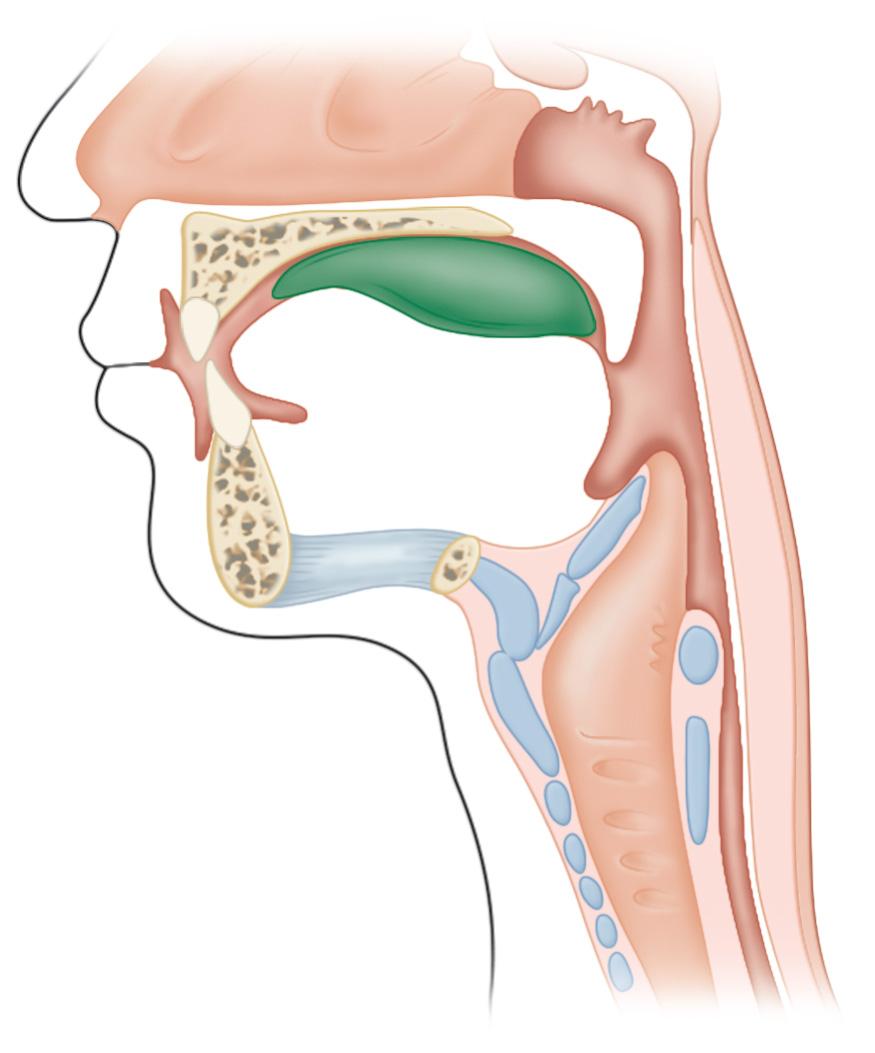
When the tongue creates more pressure on the bolus toward the soft and hard palates, the bolus is propelled through the glossopalatal opening and enters the pharyngeal area, thus representing the transition to the pharyngeal phase ( Fig. 1.2 ). The sequences of the pharyngeal phase happen involuntarily. In health, the most important part of the process is the well-coordinated closure of the airway during the passage of the bolus. The nasopharyngeal area is closed by the soft palate and the posterior pharyngeal wall. The muscles of the floor of the mouth pull the hyoid bone, and subsequently the larynx and cricoid, anteriorly and upward, thus allowing the epiglottis to flip downward and close off the airways.
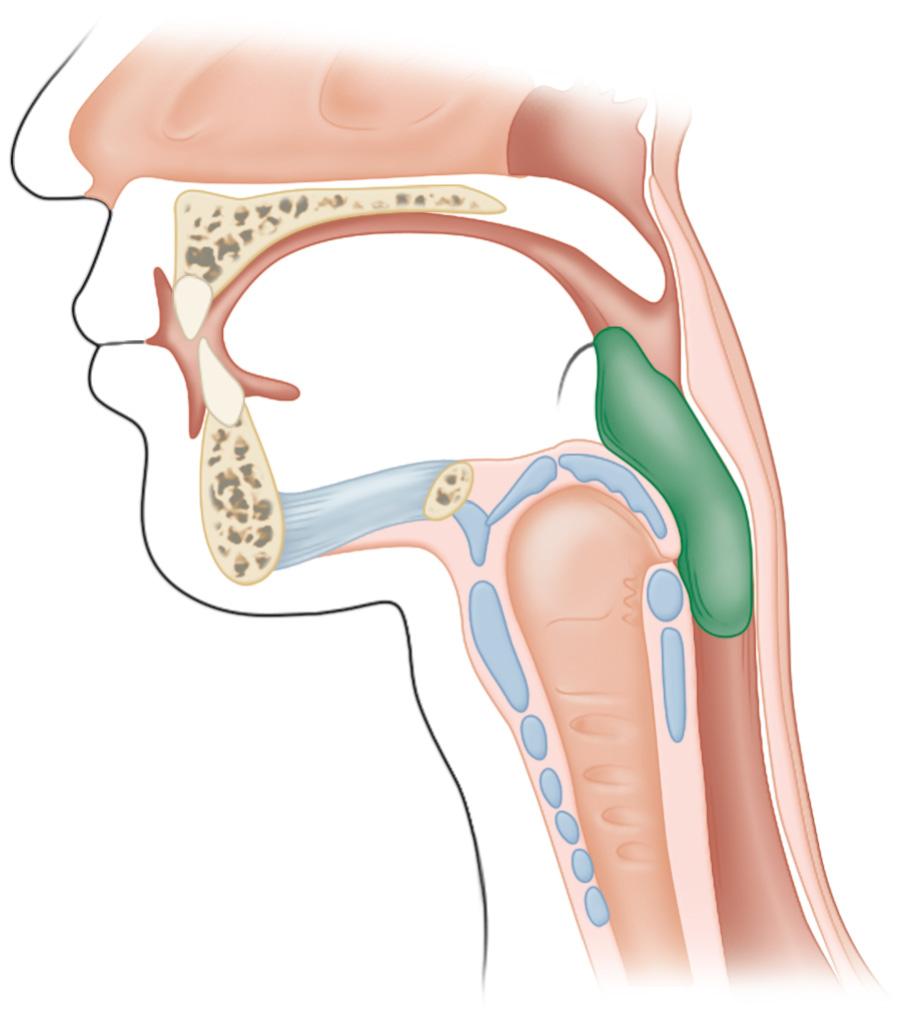
The constrictor pharyngeal muscle contracts, and the UES is opened by approximately 1 second of relaxation. The bolus leaves the pharyngeal area, moves through the hypopharynx, and into the esophagus. The esophageal phase begins as the bolus enters the proximal esophagus through the opened cricopharyngeal sphincter ( Fig. 1.3 ). The peristaltic contractions take over propulsion of the bolus and assist gravity in transporting the bolus through the esophageal corpus. Finally, all structures return to their resting positions, and the airway is opened again as the UES closes.
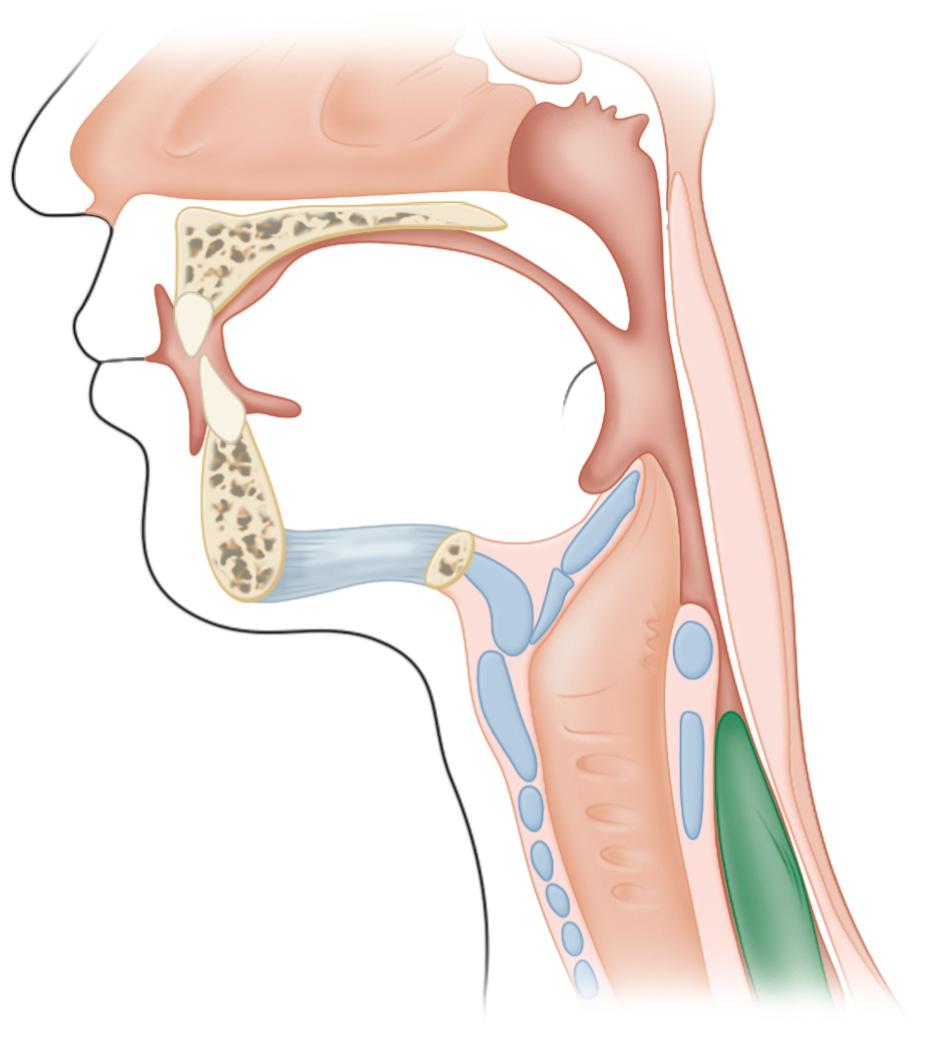
The UES comprises cricoid cartilage at the ventral border and cricopharyngeal muscle toward its lateral and posterior borders. This structure creates the asymmetric pressure profile of the sphincter. Functional assessment of the UES is usually performed by radiographic studies or manometric techniques. Routine radiographic investigations by barium swallow provide insight into the swallowing process and demonstrate pathologic anatomic alterations such as a Zenker diverticulum. However, a subtle functional failure of the regular swallowing process—for example, as a result of a discrete neurologic defect causing cervical dysphagia—might be missed. High-speed photography using a specialized kinematographic analysis may be necessary to describe dysfunctions in detail. Video documentation allows for repetitive visualization and analysis of the findings.
Clinical assessment of symptoms is necessary to clearly determine the underlying functional problem and the impact of the disorder on the patient's quality of life. Endoscopy is important in detecting or excluding malignant disease and obstruction.
Pharyngoesophageal manometric studies can demonstrate the physiologic swallowing function through the UES and possibly its pathologic changes. The UES is asymmetric and changes its pressure profile in milliseconds during swallowing. Consequently, traditional perfusion manometry with a few recorded openings and manometry probes with only a few solid-state pressure transducers cannot demonstrate subtle pressure increases or relaxations or coordination features along the vertical axis. Manometry systems with multiple recording sites along the probe and circumferentially on the probe are necessary to record sufficient data to fully describe the complex process of swallowing, not to mention the possible pathologic changes that occur in a functional disorder.
Manometry allows assessment of the pressure changes during swallowing, the relaxation of the UES, and the subsequent contractions of the esophagus. Because the UES is asymmetric, the actual opening of the UES is sometimes not accurately detected.
More recently, high-resolution manometry (HRM) techniques have provided better insight into the process of swallowing, pressure changes at the UES, and their association with esophageal pressurization. In HRM, the swallowing process at the UES can be followed quite accurately ( Fig. 1.4 ). Pharyngeal contractions and UES relaxation are monitored, and their coordination can be appreciated along the timeline. HRM allows for investigations in different circumstances.
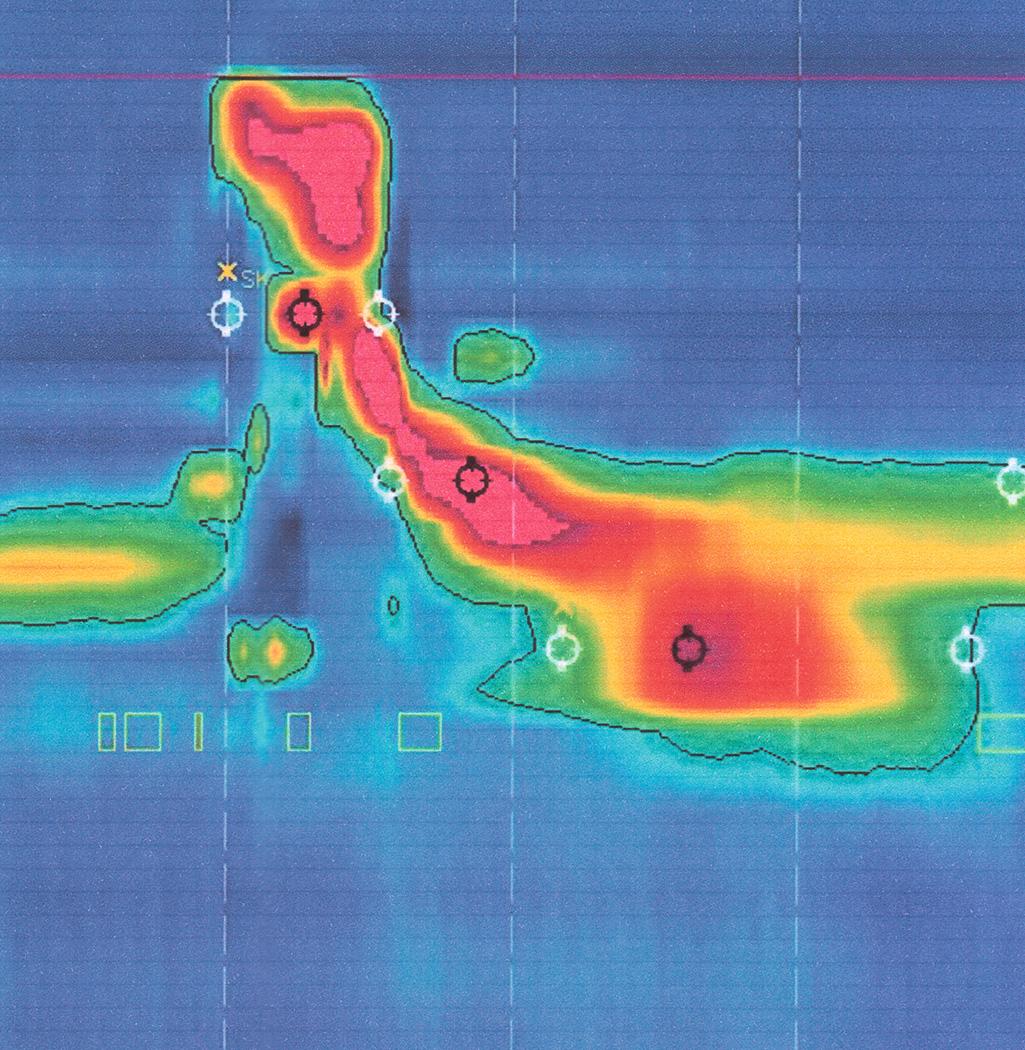
There are many disorders that can cause cervical or oropharyngeal dysphagia, including myogenic, neurogenic, iatrogenic, mechanical, and psychogenic disorders, as well as idiopathic dysfunctions of the UES, the esophageal corpus, and the LES with associated gastroesophageal reflux disease (GERD), and other esophageal and gastric disorders or obstructions that influence sensation and swallowing at the UES.
The composition of a patient population with cervical dysphagia depends to a substantial degree on individual circumstances and where and how the patient population is evaluated. In a practice with strong neurologic and/or geriatric participation, most of the patients will have neurogenic and possibly myogenic disorders. In a practice with more esophageal, surgical, and/or gastroenterologic background, cervical dysphagia is often related to idiopathic dysfunctions of the UES, LES, and esophageal corpus as well as associated motor disorders and problems after surgical therapy or radiotherapy.
Cervical dysphagia is often caused by neurogenic disorders, which alter the complex physiologic process and coordination of several muscles and structures involved in swallowing. Because the UES opens in the physiologic situation for only about 1 second to let the bolus pass, it can be easily understood that slight failures of coordination with other structures or insufficient opening of the UES can cause dysphagia.
There are three groups of possible reasons for oropharyngeal dysphagia: anatomic reasons, neurologic reasons, or muscular abnormalities. Possible anatomic sources include a local tumor, an enlarged thyroid, an abscess, a Zenker diverticulum, or scarring as a result of accidents, surgery, or irradiation. Neurologic causes are cerebral infarction, poliomyelitis, neuronal disease, Parkinson disease, multiple sclerosis, and other cerebral diseases and disorders. Muscular disorders include polymyositis, muscular dystrophy, and myasthenia gravis. Usually, precise coordination and/or muscular strength are lost, causing cervical dysphagia.
Functional testing is useful to determine the cause of the dysphagia and should include radiographic studies and HRM. Fig. 1.5 shows an HRM of the pharynx and UES in a patient with dysphagia and frequent aspiration resulting from incomplete relaxation of the UES and hypertensive pharyngeal contraction associated with a neurologic disorder.
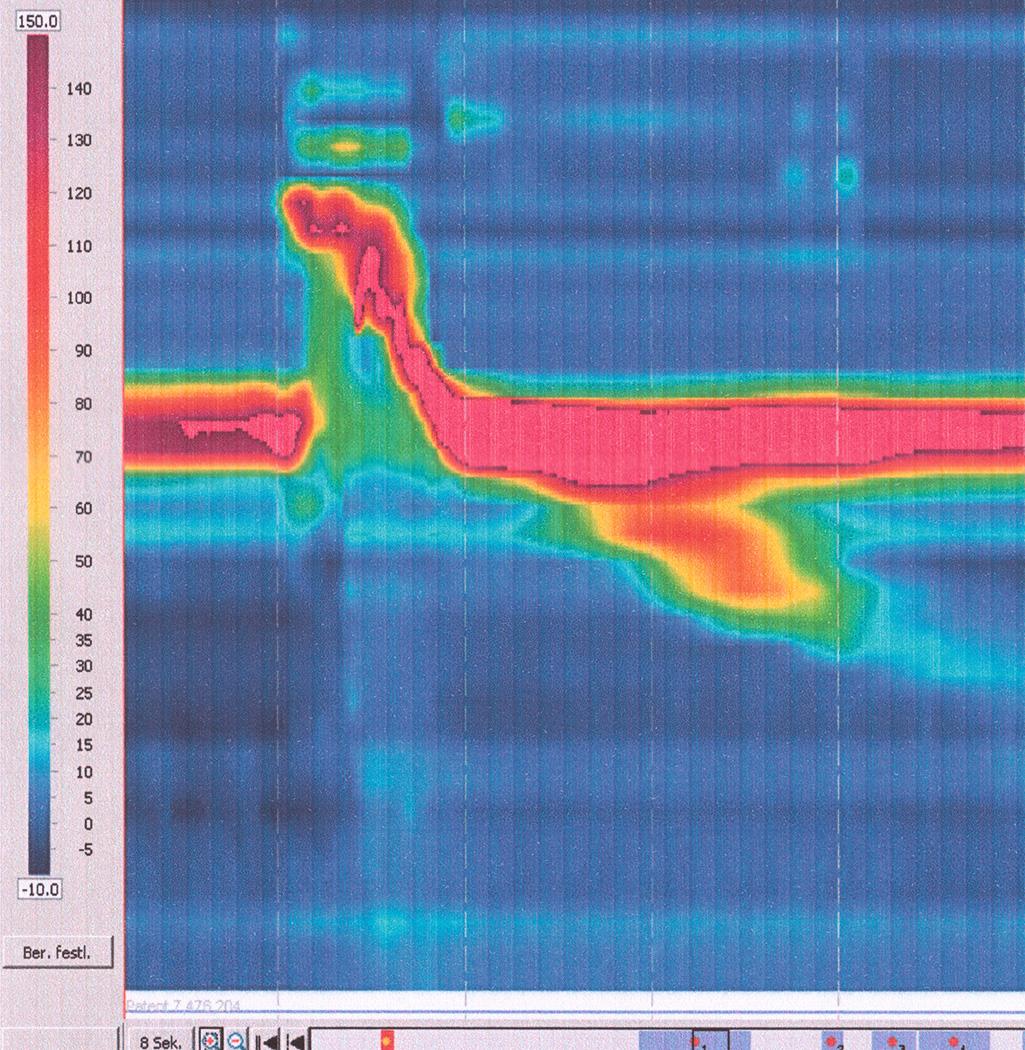
Become a Clinical Tree membership for Full access and enjoy Unlimited articles
If you are a member. Log in here